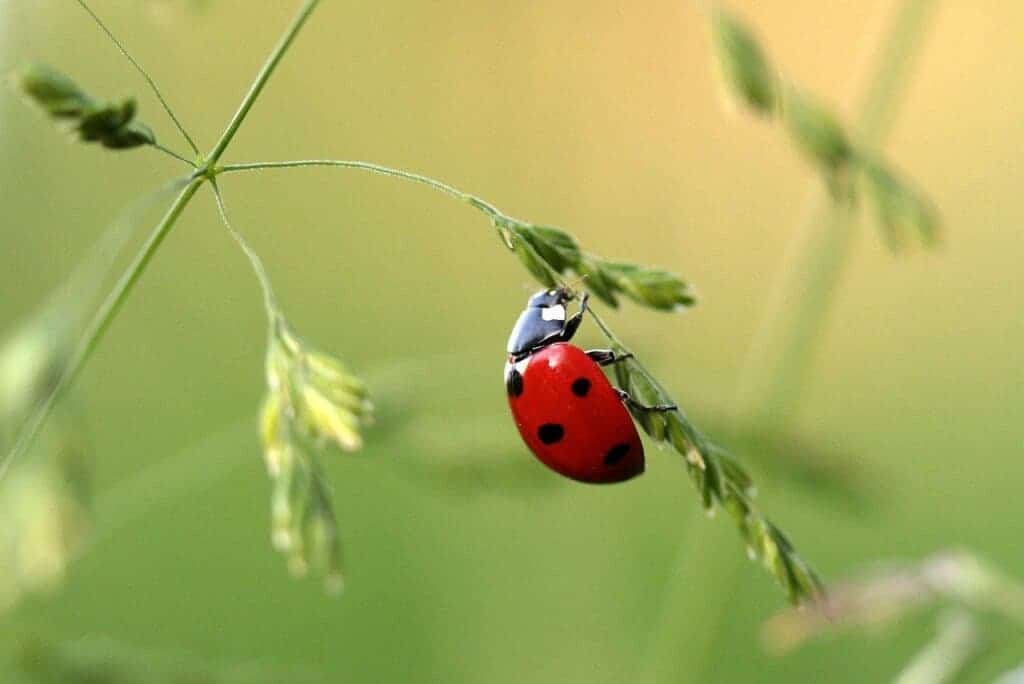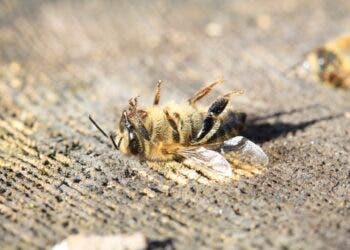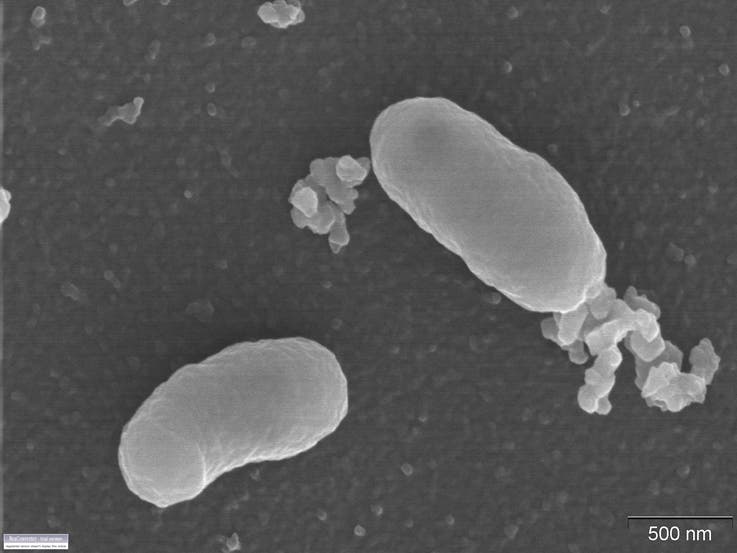
Herbivorous insects represent a major threat to growing crops either directly by destroying the plants’ stems, fruits, or roots, or indirectly by transmitting bacterial, viral, and fungal infections to the crop. In response, humans have invented pesticides, only to have the pests strike back by developing increasingly strong resistance due to the pressure of natural selection.
This problem has been bugging researchers at Pennsylvania State University for some time. In a new study, they present an out-of-the-box idea involving the ‘smell of fear’ to ward off insects from crop fields and gardens.
Eau de ladybug
Many animals sharpen their senses when danger is lurking. For instance, your sense of smell will alert you of a potentially deadly fire. The natural reaction is to get out of harm’s way.
Insects are no exception — in fact, many are much more sensitive to odors than humans since chemical communication is such an essential adaptation for insects’ survival.
Insects secrete and detect all sorts of pheromones that help them reproduce and communicate with members of their own species. They can also use odors to detect threats.
For instance, when aphids detect chemicals secreted by ladybugs, their natural predators, the insects will tend to flee. The researchers at Penn State wondered if they could somehow exploit this chemical response to ward off pests of crops.
“As our global population continues to increase, there is a growing need to enhance crop protection so that we can make enough food to sustain the human population. Insect pests are one of the biggest challenges in agricultural production, worldwide and managing them is crucial. However, pesticides that are commonly used to combat these pests can be problematic for human and environmental well-being and are farmers are increasingly experiencing pesticide bans and restrictions as well as pest resistance to this control method that render them less effective. Because of this, we are inspired to identify and develop sustainable ways to reduce insect pest pressure with reduced or eliminated use of insecticides,” Sara Hermann, Assistant Professor of Arthropod Ecology and Trophic Interactions at Penn State, told ZME Science.
“One of our major goals is to attempt to enhance the impact of predatory insects on pest herbivores to reduce the negative influence of these pests on crop plants. Rather than simply encouraging predatory insects to eat the pests, in our lab we are working to harnessing the fear or being eaten to disturb pests in ways that will limit their impact on crop plants,” she added.
Hermann and Jessica Kansman, a postdoc at Penn State, ran field experiments showing that aphids and other herbivorous insects will steer clear of fields and gardens where they smell the scent of predators.
What’s more, exposure to these chemicals slows the reproduction rates of the insects and increases their ability to grow wings, both natural behaviors meant to better equip them to escape threats. The question remained which compounds exactly caused the aphids to react to the ladybug’s chemical presence.
Extracting the odor of fear
In their new study, the researchers at Penn State used gas chromatography-mass spectrometry to identify and extract the volatile odors secreted by ladybugs. They then hooked up the antennae of live aphids to an electroantennogram (EAG) machine and exposed them to each individual chemical component released by the ladybugs in order to see which compounds they could detect.
That’s easier said than done since insect ecology involves its own fair share of challenges, from braving bad weather during field work to handling delicate specimens. But the researchers managed to rise to these challenges.
“Aphids are TINY. So, we have had to get creative to assess their behavior, using specialized tools and techniques rather than visual observations.
“Ecological research can be really funny, because in order to isolate the specific interactions we seek to understand, we have to get creative. I often say that more than 50% of the job is arts and crafts, to develop arenas where we can do our experiments that just are not available for purchase. For this project, I had to teach the entire lab how to use a sewing machine so we could fashion field cages that would be able to exclude organisms other than our aphids and ladybeetles. Justifying our spending and purchasing must be hilarious to read in the business office!” Hermann said.
Of the numerous compounds released by the ladybug, aphids had the strongest reaction, judging from the EAG signal, to methoxypyrazines, such as isopropyl methoxypyrazine, isobutyl methoxypyrazine, and sec-butyl methoxypyrazine.
Using these starting chemicals, the researchers developed a special odor cocktail which now has to undergo testing in the field. The cocktail is sprayed from an essential oil diffuser in order to determine whether the odors are indeed effective in the real world at warding off pests from crop fields and gardens. These volatile chemicals are dispersed into the atmosphere rather than being sprayed onto plants.
“Because of this, organisms, plants and humans would not come in contact with the product making the toxicity risk quite low and the management strategy safe. We are examining the potential for these odors to influence other members of the insect community, including beneficial pollinators and other predatory or parasitic insects,” Hermann said.
If that’s the case, farmers and gardeners could have a new toxin-free alternative to conventional pesticides.
“Our next steps will be to trial this strategy in other crops, beyond brassica where we have been using it. An advantage of this research is that lady beetles are predators of a lot of different insect pests, so we may be able to control other insect pests in other crops using this technique as well. The results of these field studies will inform the design of a diffuser that we will develop with an industry partner and guide us toward other field trials that will need to take place before this tool can be made widely available,” Hermann said.
The authors of the new study will present their findings at the fall meeting of the American Chemical Society (ACS), held virtually this week.






